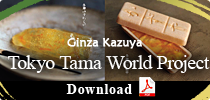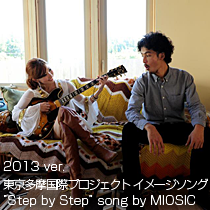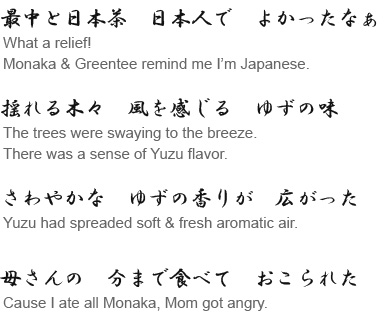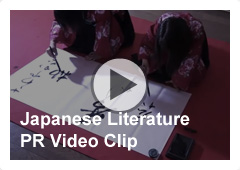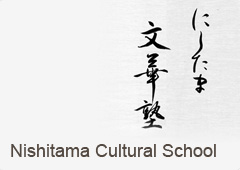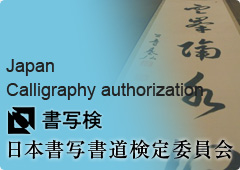A Japanese poem composed of three unrhymed lines of five, seven, and five syllables is called a Haiku. Spoken language has been around for tens of thousands of years, and written language for thousands of years. A Japanese Haiku with three unrhymed lines of five, seven, and five syllables attracts attention worldwide in areas such as environmental and social issues.Traditionally, it contain either a direct or oblique reference to a season. In addition to that, it is composed of words rich in rhyme and rhythm, which enable to explore imagery. It is an art form comprising of only 17 words.
This project involved students from kindergarten to high-school, at Kotogawara Gakuen, an educational institution for Japanese calligraphy. After eating yuzu confectionary from Ōme, the students were asked to express its taste through traditional Japanese literature forms, Haiku and Japanese calligraphy. We received sixty poems from fifteen students, who enjoyed the Japanese confectionary and explored the way to express its taste with the consideration of culture and seasons. The followings are chosen from all the work done by the students:
"Nishitama Cultural School" Kotogawara Gakuen, Japanese Calligraphy School", Japanese Literature
Top page » "Nishitama Cultural School" Kotogawara Gakuen, Japanese Calligraphy School" , Japanese Calligraphy School, Japanese Literature



■ Nishitama Cultural School
The school is located in Nishitama district, which is surrounded by nature on the Western side of Tokyo. Participants of the school include former professor Dr. Takusei Umenai at Tokyo University as well as people from medical facilities, cram schools and newspaper companies. We focus on traditional Japanese styles of short poetry, such as Haiku, Senryu and Tanka. By reading and evaluating each other's works, students are encouraged to understand the extent of their emotions. We are exploring a way to teach new values through education.
■ Kotogawara Gakuen, Japanese Calligraphy School
The school encourages students to feel empathy and compassion towards others and understand the importance of words through writing. We offer a broad range of classes where children can learn at different levels depending on their preferred learning styles and individual skills.

In 1998, the WHO definition of health was modified with the consideration of the relationship between society and the environment. In 2002, the United Nations adopted a resolution to start the Education for Sustainable Development (ESD). The concept of ESD is an umbrella for many forms of education that already exist. This concept leads us to develop educational systems by deepening thoughts of nature and society. The philosophy of Nishitama Cultural School relates to this concept. We believe that writing activities enable us to connect local communities to the world.











